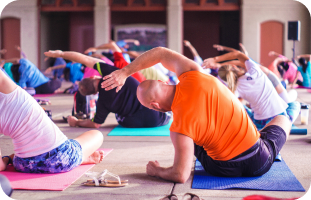MG can be challenging, but with the right approach and support, you can have a healthy working life. Here's how your employer and healthcare team can help.*
Get support from your employer
For those who manage MG effectively with medication, daily activities can often go smoothly. But we still invite you to consider these tips to make your workday easier:

Staying healthy at work
It can be hard to know when to tell your boss and coworkers about your diagnosis. Your doctor or others you know through an MG support group may be able to offer suggestions for how to approach the subject of adjustments. It will probably help to reassure your boss that most adjustments are no- or low-cost.
Some adjustments you may want to discuss with your company include:
- A guaranteed parking space near the building
- Building breaks into your workday
- Reassigning or reducing lifting duties
- Allowing you to work from home
- Flexible deadlines to minimise stress
- Ensuring your workplace is cool enough
- Assistive devices such as a cart, voice-to-text software, grip handles, and more
- Preventive measures to keep you healthy at work
- Reasonable accommodations to your work environment and schedule
- When to get emergency help
- Key contacts
Balancing myasthenia gravis (MG) and work requires a proactive approach and support from both your healthcare team and your employer.
With appropriate strategies and adjustments, you can manage your condition effectively and maintain a productive work life.
Remember to communicate your needs, seek support and use available resources to create a healthy and supportive work environment.
*This article features insights from Tommy, Julia, and Alexis, who live with myasthenia gravis and originally shared their perspectives on mg-united.com, a site for U.S. readers.



